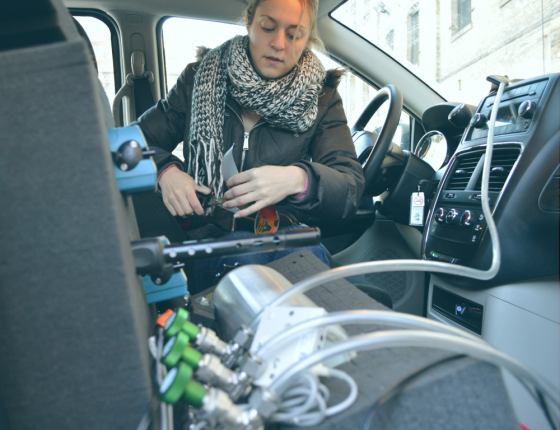Overview
The Minnesota Youth Tobacco and Asthma Survey (2011) found that 25.8% of middle school students and 37.3% of high school students surveyed had ridden in a car in the preceding week with someone who was smoking cigarettes. Previous research has demonstrated that secondhand smoke levels in cars can be extremely high due to the restricted area, and this it can be especially dangerous for children who are still developing physically and biologically. Children are likely to be at greater risk from secondhand smoke exposure due to their more rapid breathing rate, less developed immune system, and inability to move away from the source.
This project furthered past research by measuring passenger exposure to smoke in vehicles under a wide range of variables including window positioning, ventilation settings, speed, smoking behavior, and type of vehicle. The project team conducted 138 trials to gather secondhand smoke exposure data in vehicles in Minnesota. Monitoring included continuous photometer measurements of fine particles (PM2.5) before, during, and after a participant drove and smoked a cigarette.
The most striking results came from trials that involved vehicles with windows closed. For trials with windows closed and vent fan on, the average PM2.5 concentration during smoking ranged from 138 to 2,694 with an average of 1,020ug/m3. After smoking stopped, it took between four and 25 minutes for the particulate level to decrease to the background level. Under these conditions, a person’s exposure with just one cigarette smoked is similar to spending three hours in a smoky bar. And in some of the trials where vehicle windows were closed, it took 25 minutes or more for secondhand smoke to dissipate and for particulates to return to background levels. Opening windows just two inches reduced exposure by almost an order of magnitude and fully opening at least one window reduced exposure by a factor of 34.
Dissemination of findings is an important part of this project and its goal to educate the public and inform policymakers. Currently, eight U.S. states have smoking bans in vehicles. While Minnesota has brought forth legislation to try to ban smoking in vehicles when children were present, nothing has been enacted and there is still a need for more research and education. CEE and project partner Association for Nonsmokers — Minnesota (ANSR) developed materials for tobacco control advocates, public health communities, and policymakers to help inform education campaigns and regulations.
Video promoting research results
Related reports and tools
